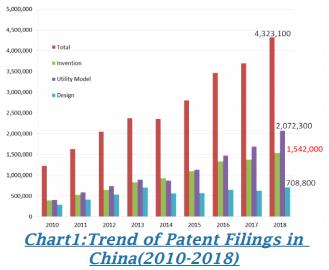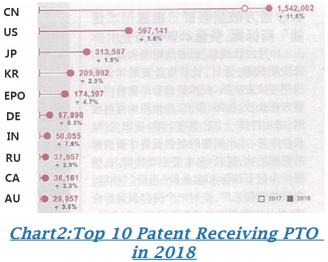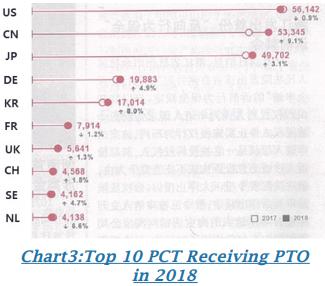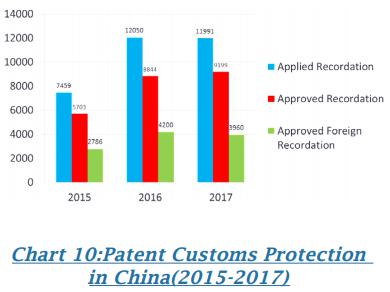With the quick development of the Chinese economy, the Chinese market becomes non-negligible for both Chinese companies and foreign companies. Chinese government attached great importance to Intellectual property protection, as Intellectual property is becoming an increasingly valuable asset and a powerful tool to keep competitiveness for innovative entities. Nowadays, the amount of patent applications and valid patents has reached an amazing level. Accompanied by the high volume of valid patents and increased knowledge of the patent owner on how to defend their lawful rights, solving patent related disputes by litigation or other measures is booming and is more popular compared with the situation many years ago. This is especially true for Chinese companies. However, through communication with lots of foreign companies and lawyers, the author feels they have lots of concerns regarding their patent protection in China, sometimes they are afraid of litigating in China even though they have a very good patent portfolio in China. This article is aiming to provide some basic information regarding the latest patent enforcement issues in China and hope to help innovative entities make suitable patent protection strategies in China.
I. Some fact you need to know
Chart 1 shows the trend of patent filings in the past ten years which has a very steady increase. Taking year 2018 as example, the total patent filings reached 4,323,100, including invention patent filings of 1,542,000, Utility Model patent filings of 2,072,300 and Design patent filings of 708,800. It is expected that these numbers in 2019 will have a slight drop, but will still be kept at a very high level. It should be pointed out that, averagely, around 160,000 patent flings are from foreign countries, only accounting for 3.7% of the total number.
Chart 2 shows the comparison among national patent filings received by Top 10 patent offices around the world in 2018. Chart 3 shows the comparison among PCT filings received by the Top 10 patent office as Receiving Patent Office around the world in 2018. In both charts, the Chinese patent office was in a leading position, which means China-based innovative entities are playing more important roles in the global market.
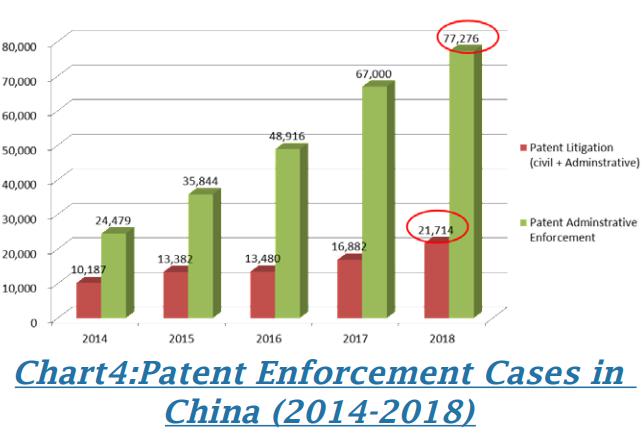
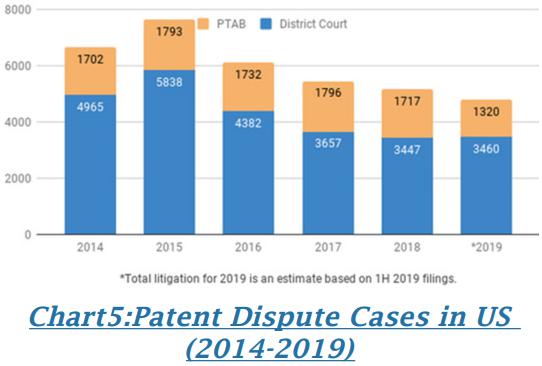
Since the Chinese government promised to improve the intellectual property protection in many occasions greatly, which is required not only by the external environment but also more importantly by the internal environment and intrinsic demand (above Charts 1-3 have been successfully indicated this trend). Enforcement of patent shown in Chart 4 ultimately reflected the efforts and achievements from the Chinese government and courts. The amount of patent litigation (including civil litigation that is mainly used to address patent infringement and administrative litigation that is mainly used to address the decision of rejections and decision of invalidation from Chinese Patent Office (now CNIPA, National Intellectual Property Administration of China) ) experienced an obvious increase and reached to 21,714 in 2018, while the patent administrative enforcement, as very important supplementary measures for tackling patent infringement especially for those easy cases such as Utility Model or Design patent infringement, reached unbelievably to 77,276. It is believed that both the number for patent litigation and patent administrative enforcement will continue increasing in 2019. By contrast, patent disputes cases before the district court and PTAB in the US is going down gradually in the past several years. This may be a sign that the hot spot for patent disputes is moving to China.

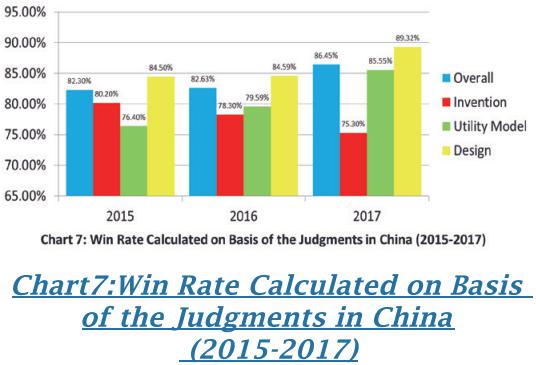
Following Chart 4, Chart 6 shows the statistics of patent infringement litigations decided by Chinese courts from 2015 to 2017, including first instance final judgments and second instance final judgments. Chart 7, based on the same source of data, shows the win rate of the plaintiffs, including the situations where the plaintiff won the case completely or partially. It should be pointed out that when the plaintiff is a foreign entity, the win rate is even higher due to the more top quality of patent (which is not shown in the chart but is believed to be true). Statistically, the Chinese courts are more friendly to the patent owner and discrimination worried by most foreign companies is not a severe problem in practice.
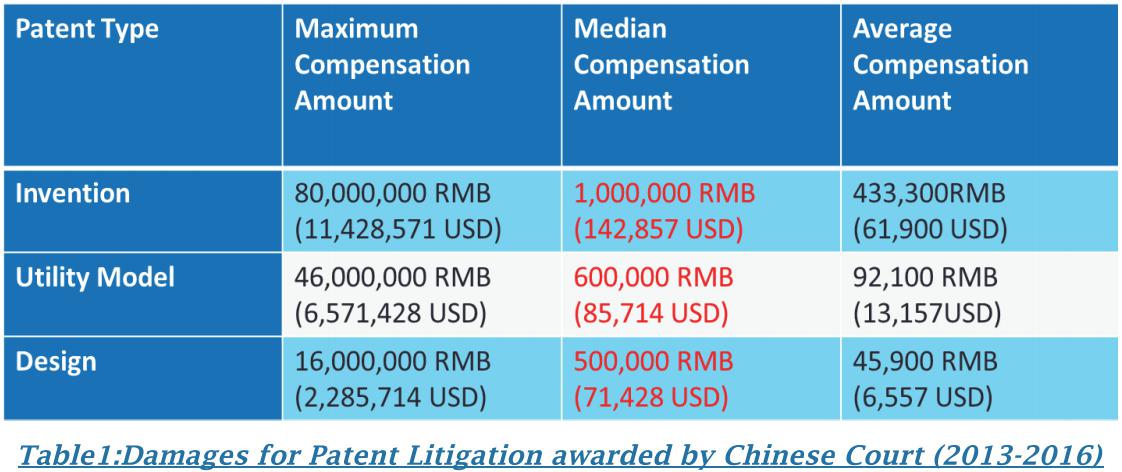

Table 1 shows the damages for patent litigation awarded by Chinese courts, and Figure 1 shows the increased damages awarded by Beijing IP court (the data is from the second annual work report of Beijing IP court). Even though the damages awarded by the courts are still not very high, especially when we compared to the cases decided by the US courts, current damages, for example, when we look at the median compensation amount and average compensation amount, are far more encouraging, considering the low litigation cost in China.

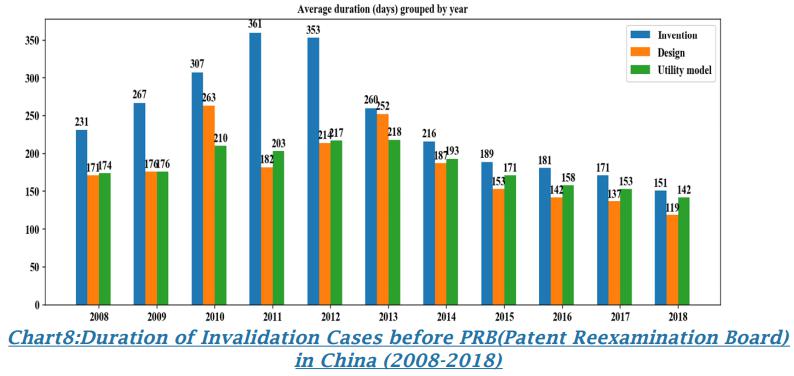
For patent disputes, China adopts a bifurcated system, which means the courts only decide the infringement and damages. In contrast,the PRB (Patent Reexamination Board of CNIPA) decides the validity of the patent. For most patent infringement litigations, the patent owners have to worry about the stability of their patent and the duration spent before PRB. Table 2 shows the incomplete statistics of patent invalidation cases from 2008 to 2018. The results are divided into four categories: 1) the patent is completely invalidated; 2) the patent is partially invalidated; 3) the patent is maintained after amendment; 4) the patent is maintained completely. The Invention patents have a good survival rate of 45.66%, and Design patents also have a reasonable survival rate of 41.80%. Unfortunately, Utility Model patents have the lowest survival rate of 34.09%, partially because Utility Model patents do not go through substantive examination and lots of low-quality Utility Model applications have been filed in the past years (noting around 2 million Utility Model applications filed per year). Chart 8 indicates the average duration for a patent (Invention, Utility Model and Design) invalidation case. From around 2011, the Chinese patent office stared to shorten the substantive examination time and invalidation examination time. Obviously, the average time from filing the request for invalidation to receiving the decision of PRB is shortened to around 150 days (about 5 months). Compared to most major patent offices around the world, this is a very impressive achievement.
II. Ways to Protect Your Patent
Chinese legal system provides a variety of ways to protect your patent right, which includes mostly used judicial protection, administrative protection, customs protection, and complaint to the E-commerce platform. Based on the nature of the patent and cost, time, effectiveness, damages, the patent owner may choose a suitable way to protect his patent and achieve his commercial goal.
A) Judicial protection
Judicial protection, this is, to litigate before the court, is the most widely used way to enforce a patent. China has four levels of courts, that is, district courts, intermediate courts and IP courts, higher courts and the Supreme Court.
For patent litigation, the first instance will generally be handled by IP courts and intermediate courts (for exceptional cases, it may be handled in higher courts). The second instance will be handled by the Supreme Court since January 1, 2019, which significantly avoids or reduces the possibility of local protectionism and greatly unifies the judgment criteria (before January1,2019,the second instance was handled by 32 higher courts which inevitably causes a difference in judgment criteria).
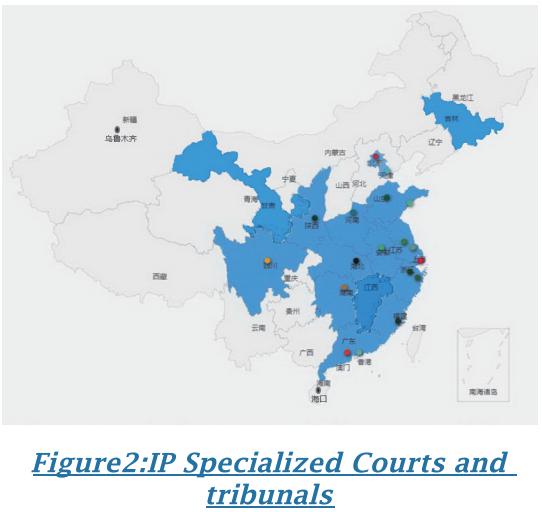

Up to now, the Chinese court system established a 1+3+20 structure for patent litigation. 1 means one Supreme Court, 3 means three IP courts (Beijing, Shanghai, Guangzhou), and 20 means twenty IP tribunals setup in respective intermediate courts (Chengdu, Nanjing, Suzhou, Wuhan, Hefei, Hangzhou, Ningbo, Ji'nan, Fuzhou, Qingdao, Shenzhen, Xi'an, Changsha, Tianjin, Zhengzhou, Lanzhou, Nanchang, Changchun, Urumchi, Haikou). Figure 2 shows these specialized IP courts and tribunals, which now cover the most economically advanced parts of China. Chart 9 shows some hot spots for patent litigation, including Guangdong Province (having Guangzhou IP court, Shenzhen IP tribunal), Zhejiang Province (having Hangzhou IP tribunal, Ningbo IP tribunal), Jiangsu Province (having Nanjing IP tribunal, Suzhou IP tribunal), Shandong Province (having Ji'nan IP tribunal, Qingdao IP tribunal), Shanghai (having Shanghai IP court), Fujian Province (having Fuzhou IP tribunal), Beijing (having the Supreme court and Beijing IP court) and Sichuan Province (having Chengdu IP tribunal).
According to Chinese Civil Procedural Law, the venue for patent infringement litigation may be the place where the defendant is domiciled or the place where the infringement was committed. Based on this rule, in practice, the plaintiff may have certain flexibility to do forum shopping to choose a favorable court to do the litigation.
Compared to other ways of protecting patent, the judicial way is effective and the ultimate measure. If the patent owner wins, he may receive monetary compensation and the injunction.
B) Administrative protection
Administrative protection is a unique way to protect patent in China, but it is a very important supplement to judicial protection. As shown in Chart 4, cases handled through administrative protection are over three times more than the cases handled through judicial protection every year.
Administrative protection should be complained to local provincial or municipal Administration for Market Supervision (formerly local patent offices). Administrative protection is a quasi-judicial proceeding that also involves the steps of the complaint, representing and cross-examining of evidence, oral hearing, and administrative judgment. Those steps are very similar to those when you litigate a case in the court. The whole proceeding of administrative protection is quick (normally 3-4 months), more cost-effective (compare to litigation), highly efficient and enforceable. If infringement is determined, the Administration for Market Supervision may ask the infringer to stop infringement, but cannot award damages to the patent owner. If either party (patent owner or infringer) is not satisfied with the decision of the Administration for Market Supervision, he may appeal the case to an intermediate court to seek a final judicial review.
Therefore,for those infringements involving in Utility Model patent, Design patent and simple Invention patent, administrative protection is a recommended and worthwhile way. CNIPA just issued a Guideline to Administrative Adjudication of Patent Infringement Disputes in December of 2019, which is expected to give useful guidance to the staff in local Administrations for Market Supervision and will help to more effectively and fairly handle the patent disputes.
C) Customs Protection
Customs protection is used by more and more the Intellectual Property owners as indicated in Chart 10, and also become more popular for foreign companies (about half of the approved recordation is from foreign entities). This way is particularly useful for those easily recognized and not so complicated Intellectual Property such as Trademark, Design and Utility Model.
After the recordation of the Intellectual Property has been approved by the customs, the customs will inform the IP right owner if they find the possible infringing goods, the IP right owner may request to detain the goods with paying of guarantee. If the IP right owner discovers infringing products to be exported or imported, he may file a request, provide evidence and pay the guarantee to the customs to seek seizure of the products.
D) Complaint to E-commerce Platform
E-commerce is experiencing explosive growth in recent years. The transaction scale has reached US$ 428 million in 2017. Online infringement spreads fast and wildly, and thus E-commerce platform complaint becomes an indispensable way to stop infringement, with the advantage of a simple procedure, a short period of time, directly stop sales of infringing goods.
Most major E-commerce platforms such as Alibaba.com, Taobao.com, JD.com, Suning.com, etc., provide complaint interface. After preparing the evidence and claim chart comparison between the patent and infringing goods together with the proof of the valid patent (patent evaluation report is required for Utility Model and Design), the complaint may be file to the operator of the online platform who will also consider the argument from the accused infringer. The links to the infringing goods will be taken down if the infringement is obvious. For those complicated cases which are difficult for the operator to determine, the patent owner may have to go to court.
III. Some Difficulties for Protecting Your IP in China
The old impression of IP protection in China is that it has a long time period, needs a heavy burden of proof and, in the end, gets low damages. However, since Chinese President Xi Jinping declared that the Chinese government would enhance IP protection and let the infringer pay heavy prices many years ago, the IP protection environment has been changed significantly and will be kept on improving.
A) Timing Issue
In fact, since 2016, the duration of the proceedings for invalidation and litigation has been shortened a lot. According to Chart 8, the invalidation proceeding before PRB may be finished in 4 months averagely. In practice, the first instance for infringement litigation may be concluded generally in 8-12 months, and the second instance will be within 6-8 months.
As for invention patent litigation, the infringement litigation usually will not be suspended if the invalidation for the concerned patent is requested, which may ensure the infringement litigation will be judged in a reasonable time. As for Utility Model and Design, the infringement litigation is very likely to be suspended if the invalidation for the concerned patent is requested, because of the relatively low stability of Utility Model and Design. If the patent is invalidated by PRB, the infringement litigation will be dismissed before the administrative litigation related to the validity of the patent is concluded, which will not prolong the infringement litigation excessively. If the patent owner finally wins the administrative litigation related to the validity of the patent, he may initiate the infringement litigation again.
All the above rules for determining the validity and infringement have been carried out and make the whole process of patent infringement litigation smoother and quicker.
B) Evidence Collecting Issue
The basic rule for evidence collection is "who claims, who adduces evidence." It is the plaintiff's burden to collect evidence to support asserted claims (unless the burden is shifted). All the evidence should meet the requirement of being original (only original evidence is admissible), being notarized (notary is the king) and being legalized for evidence acquired abroad.
There are many ways for the plaintiff to collect evidence.
1) Private Investigation
This is the most commonly used way. It should be noted that investigations should be undertaken as early as possible. In many cases, it is too late to do the investigation after sending Cease & Desist letters to the infringer. Investigations and controlled purchases should be better witnessed by a notary public if necessary.
2) Attorney Investigation Order
Attorney Investigation Order is a court order issued to the attorney. The attorney taking this order may go to the related authorities to investigate and collect relevant materials. This order becomes available in more and more courts such as Beijing, Shanghai, Chongqing, Hubei and Henan etc.
3) Request the Court to Take Preservation
For the evidence which is not readily obtainable (for example, the accused product is large-sized engineering facility, or the patent involves manufacturing process, etc.), the plaintiff may request the court to take evidence preservation before or during the litigation. This rule is based on Chinese Civil Procedural Law, which says, "the people's court shall investigate and collect evidence which a party is unable to collect for some objective reasons and evidence which the court deems necessary for trying a case."
4) Burden shift - Obstruction of Evidence Rule
This is a very powerful tool and alleviates lots of difficulties suffered by the plaintiff. According to this rule, for determining the amount of damages, where accounting records and materials related to infringement are held by the infringer and the right holder has tried best on the burden of proof thereof, the court can order the infringer to provide the accounting records and materials related to infringement; where the infringer refuses to provide the same, the court can determine the amount of damages in accordance with the claim and evidence provided by the right holder.
C) Damages Issue
Current Rules for Determination of Damages are based on the following orderly: actual loss of the patentee, benefit gained by the defendant, reasonably multiplied amount of the royalties of the patent, and statutory damages.
In the Proposed 4th Amendment to Chinese Patent Law (which has been approved by State Council of China, but is still under review of Chinese legislative body – the People's Congress), it is intended to enhance the damages in the following aspects: 1) upper limit of statutory damages will be increased from 1,000,000RMB to 5,000,000 RMB (714,285 USD), 2) for serious, willful infringement, punitive damages (up to 5 times) may be applied; 3) the reasonable expenses paid by the patent right holder to stop the infringement should be awarded.
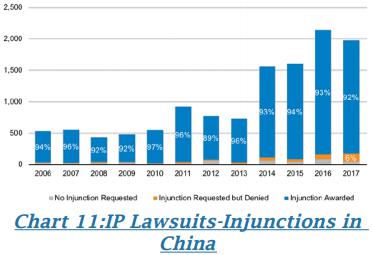
Besides monetary compensation stated above, the plaintiff may get a pre-litigation injunction and preliminary injunction (even though it is difficult) and easily get a permanent injunction if he wins the case. Chart 11 shows the statistics of injunctions granted by Chinese courts from 2006 to 2017, which indicates a very high approval rate of an injunction. Since China is regarded as a world factory, the injunction in China is almost an injunction across the world.
IV. Why choose China to litigate
The above information and efforts made by the Chinese government and court system may give the patent owner and innovative entities lots of confidence. The below perspective from a US big company will be an even stronger and convincing source to enhance such kind of confidence. This US Company has very rich experience in litigating in China and summarizes the reasons why foreign companies should litigate in China as following 6 points:
1) High Win Rate: Foreign entities' rights are guaranteed, and they enjoy a comparatively high win rate than Chinese domestic companies;
2) Fast: Due to lack of discovery, cases are often resolved within 6 to 12 months, much faster than in the US;
3) Cheap: No discovery and the attorney's fees are cheaper than in the US;
4) Enhanced Damages: With the improvement of the Supreme People's Court's judicial policy, higher IP damages are expected;
5) Powerful Injunction: Infringement case winner have a right to an injunction, which applies not just to products sold in China but also to the exports of goods that are made in China; and
6) Forum-shopping Possibility: Based on the current rule of determining litigation venue, forum-shopping is available.

